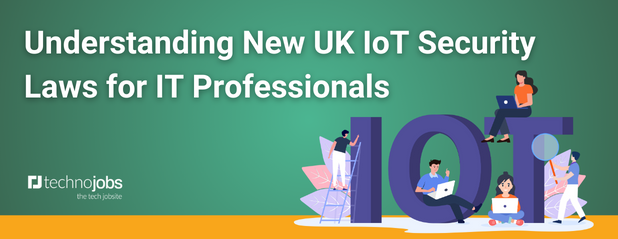Understanding New UK IoT Security Laws for IT Professionals

Cybersecurity and product security are paramount considerations for IT professionals. The UK government has proactively addressed these concerns by implementing regulatory frameworks and security laws.
On 29th April, the UK became the first country to enforce legal cybersecurity standards for IoT devices. These new laws are designed to protect consumers from cyber threats and enhance the nation's resilience against the growth of cybercrime.
UK Product Security and Telecommunications Infrastructure Product Security Regime
The UK Product Security and Telecommunications Infrastructure (PSTI) Product Security Regime encompasses regulations and standards safeguarding critical networks, systems, and devices within the telecommunications sector.
It focuses on ensuring the security of products and services through compliance measures, security standards, certification processes, and risk assessment protocols.
For IT professionals, compliance with this regime is crucial for:
- Regulatory Compliance: Adhering to specific regulatory requirements related to product security.
- Security Standards: Implementing robust security measures throughout the product lifecycle.
- Risk Assessment: Conducting comprehensive risk assessments to identify and mitigate security risks.
- Innovation: Fostering the development of secure technologies that enhance cyber resilience.
The regime promotes consumer trust, enhances cyber resilience, and contributes to a secure technology ecosystem in the UK.
Introduction of IoT Security Laws
The UK government has introduced the first IoT (Internet of Things) security laws to address the growing challenges associated with IoT device security. These laws mandate:
- Device Security: IoT devices must meet specific security requirements to prevent vulnerabilities and unauthorised access.
- Secure-by-Design: Manufacturers must implement security measures during IoT device design and development.
- Transparency: Consumers must be provided with clear information about IoT device security features and capabilities.
The PSTI Act focuses on consumer-connectable products, which include devices capable of internet or network connections for data transmission and reception. While the legislation primarily targets consumer products, certain business-to-business connected devices are also covered.
Additionally, a subset of consumer-connected devices is exempt to prevent duplicate regulation. Stakeholders who work within the connectable product network must familiarise themselves with the Act to ensure compliance.
Key Requirements of PSTI
The legislation introduces three essential cybersecurity measures aligned with the first three requirements of the globally recognised IoT Security Standard (ETSI EN 303 645):
- Passwords: Mandates unique passwords per device or allows user-defined passwords to eliminate universal default passwords.
- Security Issue Reporting: Requires manufacturers to provide clear instructions to consumers on reporting product security concerns promptly.
- Security Updates: Mandates manufacturers to disclose the minimum period for security update availability.
While the PSTI Act initially incorporates the first three principles of the ETSI EN 303 645 standard, future expansions may cover the following:
- Secure communication
- Minimizing attack surfaces
- Ensuring software integrity
- Protecting personal data
- System telemetry monitoring
- Simplified device maintenance
- Data input validation
- Secure data storage
- Device resilience
Manufacturers, importers, and distributors are encouraged to assess their compliance readiness for forthcoming requirements to enhance the security posture of connected products.
For IT professionals working with IoT technologies, these laws highlight the importance of:
- Security Implementation: Ensuring IoT devices meet regulatory security requirements.
- Secure Development Practices: Integrating security into the design and development of IoT solutions.
- Consumer Awareness: Educating consumers about IoT device security and best practices.
Navigating Regulatory Compliance
IT professionals can navigate these regulatory frameworks effectively by:
- Staying Informed: Keeping ahead of updates and developments related to product security and IoT laws.
- Collaboration: Engaging with regulatory bodies, industry peers, and cybersecurity experts to exchange knowledge and best practices.
- Continuous Improvement: Implementing security measures and practices that align with regulatory requirements.
Compliance Penalties
Non-compliance with the PSTI Act carries significant financial penalties, with fines of up to 4% of global turnover or £10 million. The legislation empowers authorities to issue corrective actions, halt notices, recall notices for non-compliant devices, and prohibit the sale or distribution of non-compliant products until issues are rectified.
The UK's proactive approach to product security and IoT security laws underscores the importance of cybersecurity and regulatory compliance in today's digital era. IT professionals play an important role in ensuring compliance, fostering innovation, and enhancing cyber resilience to build a secure and resilient technology ecosystem in the UK.
